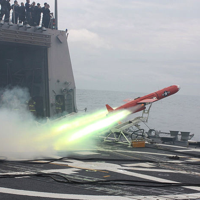It was an ignominious start for a potentially profound technological revolution. On June 21, 2011, a U.S. Navy MQ-8 Fire Scout robotic reconnaissance helicopter was shot down near Tripoli by forces loyal to then-Libyan dictator Moammar Gadhafi. The 24-foot-long, gray-painted drone was one of two launched from the frigate USS Halyburton and remotely controlled by operators aboard the vessel. Carrying classified sensors, the Fire Scouts likely helped detect targets for NATO forces flying top cover for Libyan rebels.
The Fire Scouts' Libyan missions represent the major combat debut for the U.S. Navy's growing arsenal of unmanned vehicles. In coming years, the world's biggest maritime force could add hundreds of flying, swimming and diving robots to its existing fleets of surface warships, submarines and manned aircraft. The new unmanned systems promise to greatly expand the Navy's ability to locate and attack enemy forces.
The Navy's robotic revolution is a belated one. The Air Force, Army and Marines were quick to embrace unmanned vehicles for combat operations in Iraq and Afghanistan beginning a decade ago. But the Navy, conscious of the unique difficulties posed by water -- and by the depths and long distances of ocean environments -- waited until drone technology was more mature.

